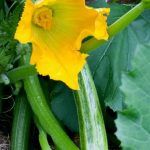Hydroponic gardening has gained popularity in recent years as a sustainable and efficient way to grow fresh produce at home. By using a nutrient-rich water solution instead of soil, this method allows for faster growth and higher yields, making it an attractive option for those with limited space or poor soil quality. For individuals looking to start their own hydroponic garden, knowing the best vegetables for hydroponic gardening is essential to ensure a successful harvest.
One of the key advantages of hydroponic gardening is the ability to control growing conditions more precisely compared to traditional soil methods. This means that factors like nutrient levels, pH balance, and water quality can be optimized to suit the specific needs of each vegetable crop. Additionally, hydroponic systems require less water overall and eliminate the need for pesticides or herbicides, resulting in cleaner and healthier produce.
From leafy greens like lettuce and kale to vine crops such as tomatoes and cucumbers, there is a wide range of vegetables that thrive in hydroponic systems. These crops not only grow faster but also taste fresher and more flavorful due to the controlled environment they are grown in. With the right equipment and care, hydroponic gardening offers an exciting opportunity for home gardeners to enjoy a bountiful harvest of their favorite vegetables throughout the year.
Setting Up Your Hydroponic Garden
Hydroponic gardening is a method of growing plants without soil, using nutrient-rich water solutions instead. It offers several benefits over traditional soil gardening, including faster growth rates, higher yields, and the ability to grow plants all year round. One of the key advantages of hydroponic gardening is that it allows for better control over the plant’s environment, leading to healthier and more productive crops.
When setting up your hydroponic garden, there are several pieces of equipment and materials that you will need to ensure successful growth of your plants. Essential items include a reservoir to hold the nutrient solution, a pump to circulate the water, growing medium (such as perlite or rockwool), pH testing kit, nutrients specially formulated for hydroponic systems, grow lights (if indoors), and containers or trays to hold your plants.
It’s important to choose high-quality equipment and materials to create an optimal environment for your plants to thrive.
In order to get started on the right track with your hydroponic garden, it is crucial to select the best vegetables for hydroponic gardening. Some top vegetable crops that excel in hydroponic systems include leafy greens like lettuce and spinach, herbs such as basil and cilantro, tomatoes, cucumbers, peppers, and strawberries.
These vegetables have been proven to grow well in hydroponic setups due to their adaptability to soilless environments and high nutrient requirements. By choosing these vegetables for your hydroponic garden, you can enjoy fresh and healthy produce right from your home.
| Vegetable | Benefits |
|---|---|
| Lettuce | Fast-growing and high yield |
| Basil | Flavorful herb suitable for indoor gardens |
| Tomatoes | Require adequate space but offer juicy fruits |
Best Vegetables for Hydroponic Gardening
When it comes to hydroponic gardening, choosing the right vegetables can make all the difference in the success of your system. Some vegetables are better suited for this soil-less method of cultivation and can thrive in a controlled environment with nutrient-rich water. Here are some of the best vegetables for hydroponic gardening:
- Leafy Greens: Vegetables like lettuce, spinach, kale, and Swiss chard are excellent choices for hydroponic systems. They have shallow root systems and grow quickly, making them ideal for beginners.
- Herbs: Basil, cilantro, parsley, and mint are herbs that do very well in hydroponic setups. They require minimal space and can be harvested continuously for fresh flavor in your dishes.
- Tomatoes: Tomatoes are popular among hydroponic gardeners due to their high productivity and delicious taste. Varieties like cherry tomatoes or vine tomatoes can be easily grown in nutrient-rich water.
These vegetables not only grow well in hydroponic systems but also provide a bountiful harvest of fresh produce for your kitchen. By selecting the best vegetables for hydroponic gardening, you can enjoy a steady supply of homegrown goodness throughout the year. Experiment with different crops to find what suits your taste buds and growing conditions best.
Caring for Your Hydroponic Vegetables
Hydroponic gardening offers a fantastic opportunity to grow fresh vegetables in a controlled environment without the need for soil. One of the key factors in ensuring success with hydroponic gardening is proper care for your vegetables. This includes maintaining optimal watering, nutrient levels, and pH balance to support healthy growth and high yields of crops.
When it comes to watering your hydroponic vegetables, it’s essential to strike a balance between providing enough moisture without drowning the roots. Different vegetables may have varying water requirements, so it’s crucial to monitor the moisture levels consistently. Using a timer-based system can help ensure that your plants receive water at regular intervals, promoting robust growth without waterlogging.
In addition to watering, supplying the right nutrients is vital for the health of your hydroponic vegetables. The best vegetables for hydroponic gardening benefit from a balanced nutrient solution that provides essential macronutrients like nitrogen, phosphorus, and potassium, as well as micronutrients such as calcium, magnesium, and iron. Regularly testing and adjusting the nutrient solution based on plant growth stages can help prevent deficiencies and optimize yields.
| Hydroponic Vegetables | Water Requirements |
|---|---|
| Lettuce | Consistent Moisture Levels |
| Tomatoes | Regular Watering with Proper Drainage |
| Cucumbers | Adequate Moisture without Waterlogging |
Common Problems and Solutions
When it comes to hydroponic gardening, one of the key advantages is the ability to closely monitor and control the growing environment for your plants. However, this doesn’t mean that you won’t encounter any issues along the way. Like any type of gardening, hydroponic systems can be susceptible to pests, diseases, and nutrient deficiencies. Here are some common problems you may face and solutions to help troubleshoot them:
- Pests: One advantage of hydroponic gardening is that pests are less likely to infest your plants since there is no soil for them to thrive in. However, some common pests in hydroponic systems include aphids, spider mites, and whiteflies. To combat these pests, consider introducing beneficial insects like ladybugs or using organic pest control solutions.
- Diseases: While diseases are less common in hydroponic setups compared to traditional soil gardens, they can still occur. Pythium root rot and powdery mildew are two common diseases that can affect hydroponically grown vegetables. Preventative measures such as maintaining proper nutrient levels and good sanitation practices can help reduce the risk of disease outbreaks.
- Nutrient Deficiencies: Monitoring nutrient levels is crucial in hydroponic gardening as your plants rely on these nutrients for healthy growth. Common nutrient deficiencies in hydroponic systems include nitrogen, potassium, and magnesium deficiencies. Regularly check your nutrient solution’s pH and adjust accordingly to ensure that your plants are receiving the necessary nutrients.
By being vigilant and proactive in addressing these common issues, you can ensure that your hydroponic vegetable garden thrives and produces bountiful harvests of nutritious crops. Remember that each plant may have specific needs, so it’s important to research the best practices for the specific vegetables you are growing in your hydroponic system.
With proper care and attention, you can enjoy a successful and rewarding experience with hydroponic gardening while reaping the benefits of homegrown produce rich in flavor and nutrients.
Harvesting Your Hydroponic Vegetables
When to Harvest
One of the benefits of hydroponic gardening is that vegetables often mature faster than when grown in soil. It is essential to keep a close eye on your plants and monitor their growth regularly.
The best way to determine when to harvest your vegetables is to refer to the seed packet or plant tag for information on the average days to maturity. Additionally, visually inspecting the color, size, and firmness of the fruits or leaves can also help you gauge their readiness for harvest.
How to Harvest
When it comes to harvesting your hydroponic vegetables, gentle handling is key. Use clean scissors or pruning shears to cut off mature fruits or leaves from the plant, making sure not to damage the stem or surrounding foliage.
Avoid pulling or twisting the produce as this can harm both the plant and the crop itself. For leafy greens like lettuce or spinach, consider using a cut-and-come-again approach by snipping off outer leaves while allowing inner leaves to continue growing for ongoing harvests.
Optimizing Flavor and Yield
To maximize flavor and yield when harvesting your hydroponic vegetables, it’s best to pick them during their peak ripeness. Different crops have specific indicators of ripeness – tomatoes should be fully colored but still firm, while cucumbers should be crisp with a bright green skin. For continuous production, stagger your harvests by picking mature crops regularly rather than all at once.
This not only ensures a steady supply of fresh produce but also encourages new growth for future yields. By following these tips on when and how to harvest your hydroponic vegetables, you can enjoy a bountiful harvest of flavorful and nutritious homegrown crops throughout the growing season.
Recipes Using Hydroponic Vegetables
Fresh Greens Salad With Homemade Vinaigrette
One of the best vegetables for hydroponic gardening is lettuce, a staple in many salads. Combine freshly harvested hydroponic lettuce varieties like butterhead, romaine, and leaf lettuce to create a vibrant Fresh Greens Salad. Add in other hydroponically grown veggies like cherry tomatoes, cucumbers, and bell peppers for extra crunch and flavor.
Top it off with a homemade vinaigrette dressing made from cold-pressed olive oil, balsamic vinegar, Dijon mustard, honey, and herbs. This simple yet nutritious salad will showcase the freshness and quality of your homegrown produce.
Roasted Bell Pepper and Tomato Soup
Bell peppers and tomatoes are excellent choices for hydroponic gardening due to their abundant yield and rich flavors. Use these fresh veggies to make a Roasted Bell Pepper and Tomato Soup that is perfect for chilly evenings or as a light lunch option.
Simply roast hydroponically-grown bell peppers and tomatoes until charred, then blend them together with garlic, onions, vegetable broth, and herbs until smooth. Season with salt and pepper to taste before serving hot with a dollop of Greek yogurt or a sprinkle of fresh basil.
Stir-Fried Bok Choy With Garlic and Ginger
Bok choy is another top vegetable for hydroponic gardening because of its crisp texture and mild taste. Harvest your homegrown bok choy and whip up a quick Stir-Fried Bok Choy with Garlic and Ginger dish that is bursting with flavor.
Sauté bok choy in a hot pan with minced garlic, ginger slices, soy sauce, sesame oil, and a pinch of sugar for a savory Asian-inspired side dish that pairs well with rice or noodles. The freshness of hydroponically-grown bok choy will elevate the overall dish to new heights of culinary delight.
Conclusion
Hydroponic gardening offers numerous benefits over traditional soil gardening, including faster growth rates, higher yields, and the ability to grow crops year-round. By eliminating the need for soil, plants can directly absorb nutrients and water in a controlled environment, leading to healthier and more productive vegetable crops. When it comes to choosing the best vegetables for hydroponic gardening, options like lettuce, tomatoes, peppers, and herbs are popular choices due to their adaptability to hydroponic systems.
Caring for your hydroponic vegetables involves monitoring watering schedules, nutrient levels, and pH balances to ensure optimal growth. It is crucial to maintain a balance between these factors to prevent nutrient deficiencies or imbalances that may affect plant health. Common problems such as pests, diseases, and nutrient deficiencies can arise in hydroponic setups but can be addressed with proper care and attention to plant needs.
In conclusion, exploring the world of hydroponic gardening opens up endless possibilities for growing fresh and healthy produce right in the comfort of your own home. With the right equipment and knowledge of how to care for your hydroponic vegetables, you can enjoy a bountiful harvest year-round.
So why not embark on this rewarding journey of growing your own food sustainably with one of the best vegetables for hydroponic gardening? Start your own setup at home today and reap the benefits of this innovative gardening technique.
Frequently Asked Questions
Which Vegetables Grow Best in Hydroponics?
Vegetables that grow best in hydroponics include leafy greens like lettuce, kale, and spinach. Other plants like tomatoes, cucumbers, peppers, and herbs such as basil also thrive in hydroponic systems due to their nutrient requirements.
What Vegetables Cannot Be Grown Hydroponically?
Certain root vegetables like potatoes, carrots, and beets do not fare well in hydroponic setups because they need space for root expansion and develop differently when grown without soil. These types of vegetables are better suited for traditional soil-based gardening methods.
What Can You Not Grow in a Hydroponic Garden?
Plants that require deep soil and extensive root systems, like large trees or certain types of bushes, cannot be grown effectively in a hydroponic garden. The lack of physical support from soil can limit the growth potential of these types of plants that rely on soil structure for stability and nutrition uptake.

If you’re looking to get into vegetable gardening, or are just looking for some tips on how to make your current garden better, then you’ve come to the right place! My name is Ethel and I have been gardening for years. In this blog, I’m going to share with you some of my best tips on how to create a successful vegetable garden.





